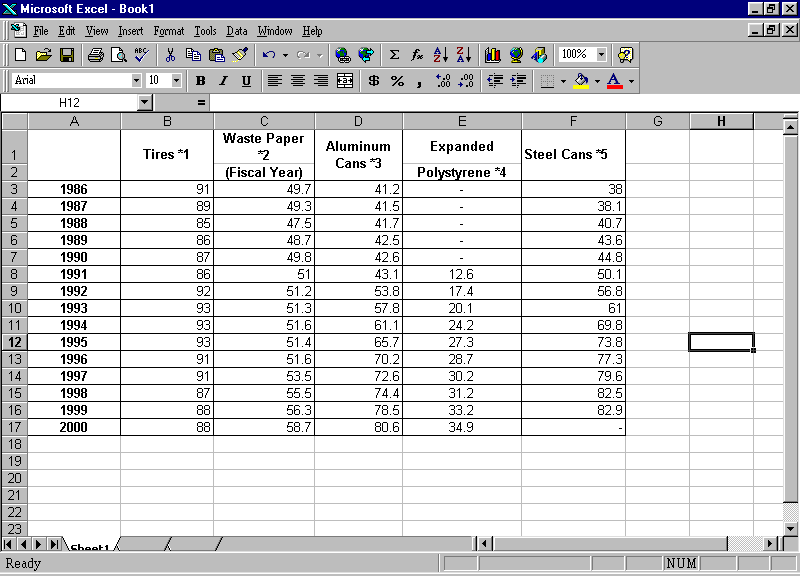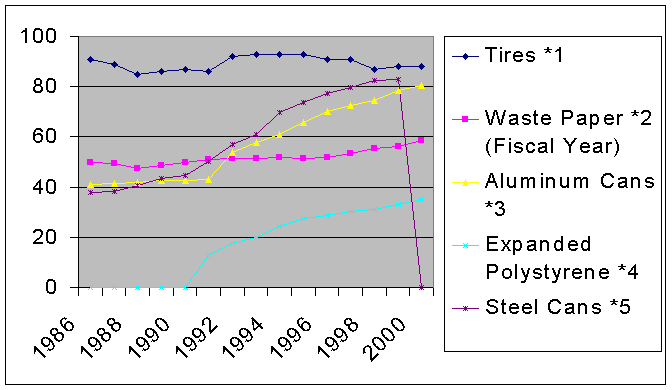
Part 1
Go to this web site
http://jin.jcic.or.jp/stat/stats/19ENV51.html
Look at the recycling rates chart for Japan (1986 -2000)
Transfer the data to a spreadsheet using Microsoft Excel (Your result should look something like below but it is your decision on how you format the data).

ACTIVITY 1
In your spreadsheet show the mean for each recycled material.
ACTIVITY 2
Create a line graph (using the graphing wizard in Excel) that compares the data for each type of recycled material (as shown below)

Note that the graph here -although visually appealing and good for presentations - is not very accurate. Your next task is to accurately put the data in line graph form and predict future trends.
ACTIVITY THREE
Look at STEEL CANS first
a. Accurately plot the graph using graph paper and the data (use the whole of the graph paper). Label 1986 as year 1, 1987 as year 2 etc.
b. Draw the line of best fit for the graph
c. Find the gradient
d. Find the y intercept
e. Give the equation of the line
f. You will note that the figures for STEEL CANS in 2000 have not been collected (it is not a zero result). Use your graph to predict the the figure for STEEL CANS in 2000.
g. Describe another method to predict the value for 2000. Work out the value for 2000 by this second method.
h. Use the line of best fit to predict the recycling levels for the next five years from 2000. If it is necessary attach another piece of graph paper to extend your graph. Use the second method to check these values.
Repeat a,b,c,d,e and h (not f and g) for ALUMINIUM CANS and EXPANDED POLYSTYRENE
i. Draw up a table to list the advantages and disadvantages of this method of fitting straight lines to data.
j. Draw up a second table to list the advantages and disadvantages of the two methods for predicting future values (extrapolation)
Final Activity/Portfolio/Presentation
Create PowerPoint slides containing the following information -
An introductory slide - Your name and the title of the project
The original data set from the spreadsheet (including the mean figures)
Any graphs created from your spreadsheet
The answers to the activities on STEEL CANS and ALUMINIUM CANS and EXPANDED POLYSTYRENE
|
WHO, WHAT, WHY, WHEN, WHERE? Who is responsible for making recycling work? What is your definition of RECYCLING? Why do we recycle materials? When will we see the benefits of recycling? Where do we see recycling occurring?
|
PART1 PART2 PART 3 PART 4 PART 5 PART 6 THEME SUMMARY
A website skillfully crafted by Mr.Paul Murray and Mr. Greg Watt
November 2001